Study species
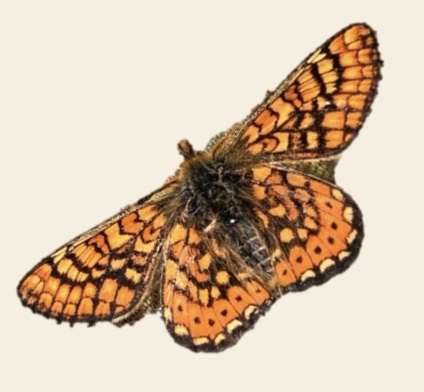
In Sweden, the distribution of the marsh fritillary has declined over time due to habitat degradation. On Gotland, it currently only occurs in naturally open, wet, calcareous grasslands, where it flies from the end of May to the end of June. During its larval stage, the species feeds exclusively on one plant species which on Gotland is the Devil’s bit scabious (Succisa pratensis). After mating, the females lay their eggs on the underside of a large, sun-exposed leaf of the host plant, S. pratensis. After hatching at three to four weeks, the larvae feed gregariously in silken webs before hibernating. In spring, after emerging from hibernation, the larvae resume feeding and basking gregariously before separating and pupating in April or May.
Study area
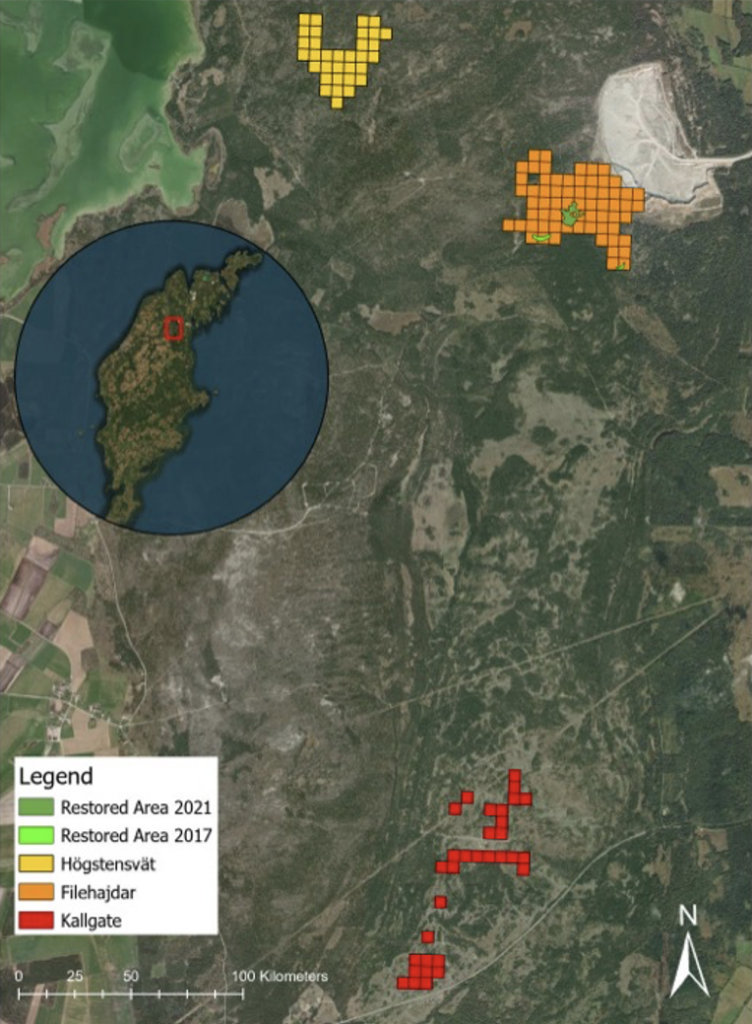
The study area is a wet, calcareous grassland with a naturally slow succession and has an abundance of the marsh fritillary butterfly’s host plant, S. pratensis. The study sites are close to the town of Slite, on the Swedish island of Gotland, in the Baltic Sea, and are distributed across three different main areas: Filehajdar, which includes the three restored areas, Högstensvät, and Kallgate.
Data collection
Imago data was collected during a five-week period from May 25th to June 28th, 2022. Larval data was collected during one week in early September by counting pre-hibernating larval webs and conducting vegetation surveys for habitat quality monitoring.
Imago Surveys
I performed two different types of surveys to estimate the population size of the marsh fritillary: a Capture-Mark-Recapture (CMR) Survey at Filehajdar and Högstensvät, and a Grid Survey at Kallgate.
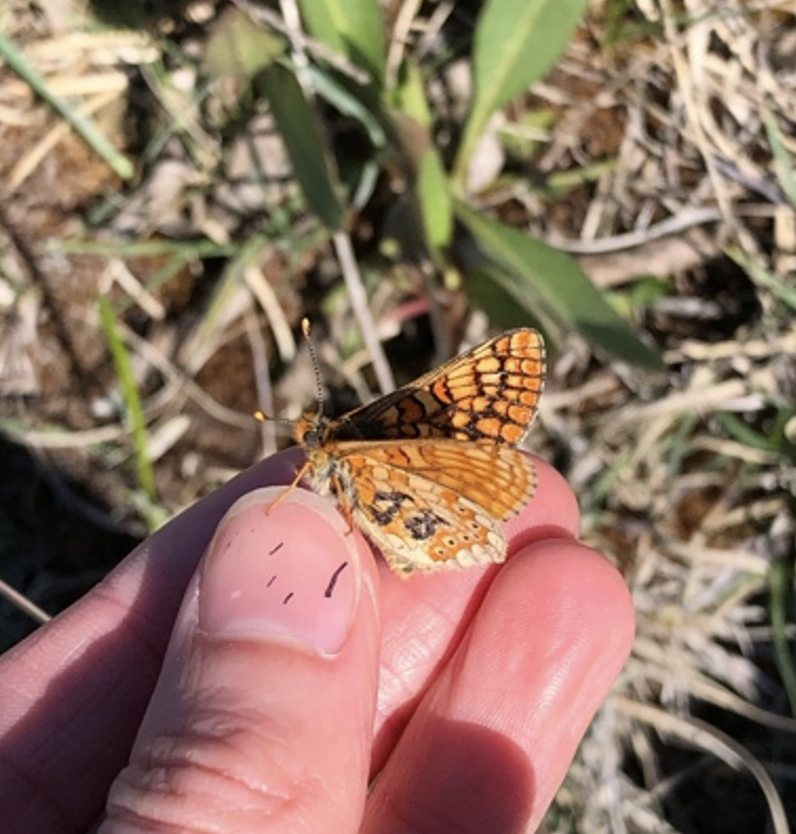
- CMR: Butterflies are captured and marked and then released back into the wild. When a surveyor recaptures a previously marked individual, the recapture is recorded, and released again. Marking took place daily, if the weather permitted (not during rain or temperatures below 17°C) and throughout the entire imago flight period. Each captured butterfly was marked with a unique number on the underside of both hind wings with a permanent marker pen and immediately released at the capture point. The sex, GPS position, hostplant (if feeding), and date were noted at the capture site.
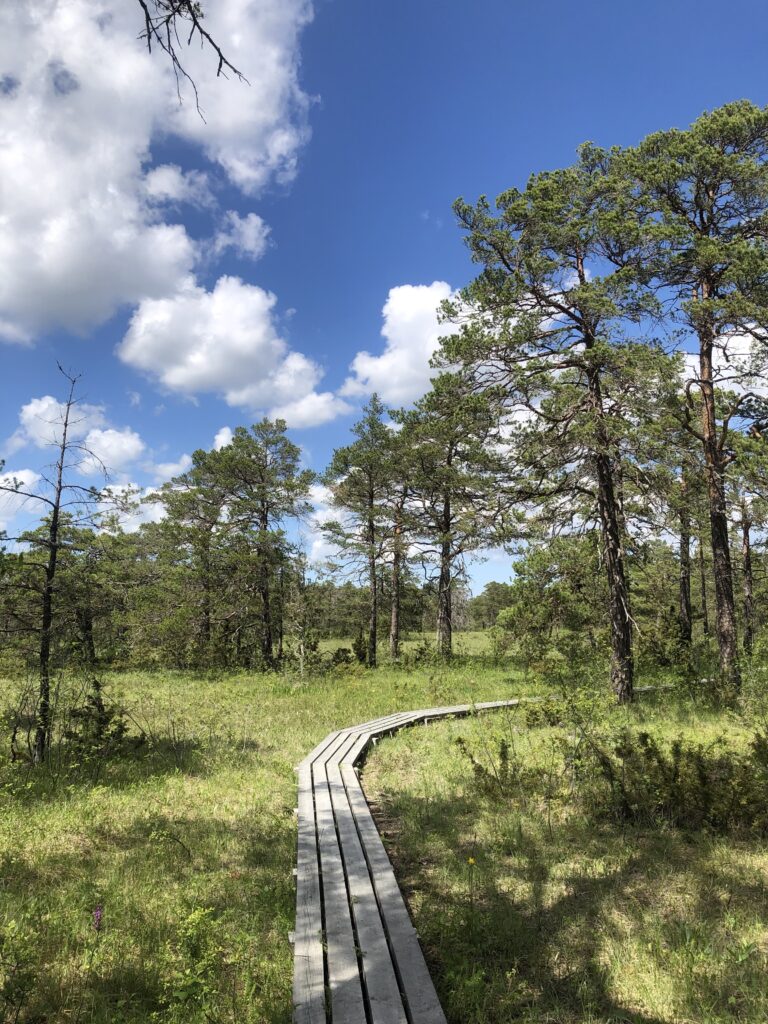
- Grid Survey: 32 one-hectare grid cells were visited seven times during the flying season of the marsh fritillary on sunny days with temperatures above 17°C. The habitat was walked along transects within an imaginary box that extended five meters in all directions, counting the number of butterflies seen within this box. During each grid survey, the GPS location of each butterfly was recorded along with the total number of butterflies sighted.
Larval Surveys
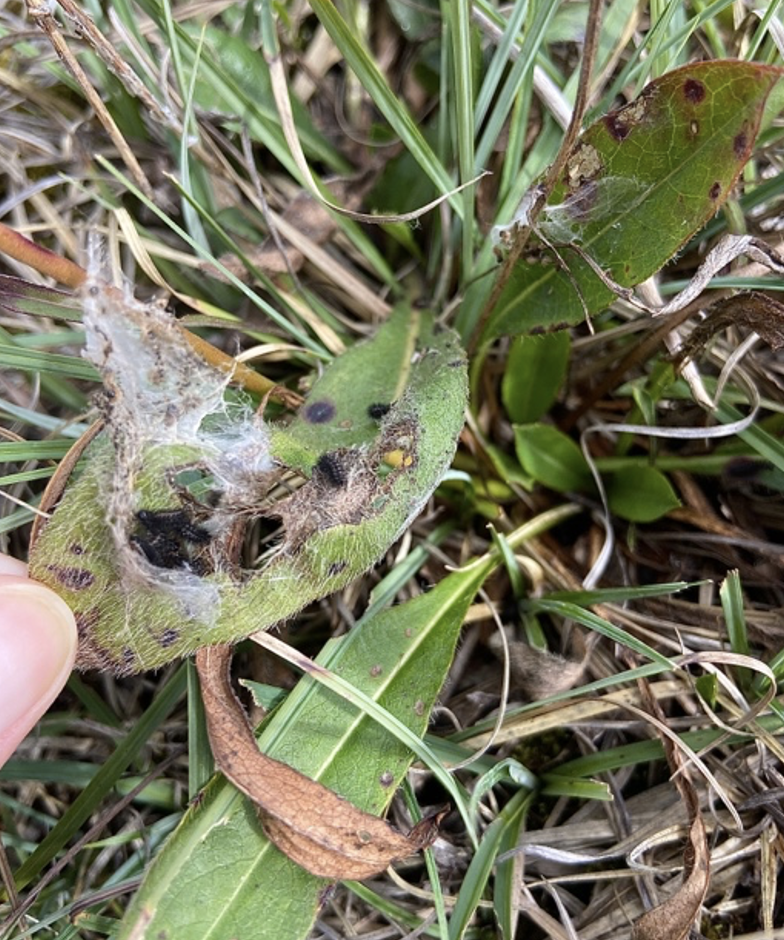
For the larval study, the entire area of Filehajdar was searched for larval nests. When a larvae nest was found, its GPS position was marked and a vegetation-type survey was performed in addition. For this purpose, a 0.5m2 plot was placed around the larvae’s nest so that the nest resided in the centre of the plot. The following parameters were then recorded inside this plot: number of host plants, number of host plant stems, maximum leaf length of the host plants in cm, condition of the larvae nest (dead or alive), presence of tussock as well as the general vegetation height. Approximately 15 control plots, depending on the size of the habitat, per one-hectare grid cells were additionally placed along randomized transects for comparison purposes. The data collection in Kallgate and Högstensvät was not a full survey and therefore conducted along randomly selected transects in each one-hectare grid cell. Approximately 15 plots, depending on the size of the habitat, were randomly placed, and the same vegetation parameters as before were recorded as well as larval presence or absence.
Statistical analyses
Habitat preferences: I conducted a large-scale study (on a one-hectare grid cell level) to analyse the habitat preferences of imago butterflies. Using a generalized linear model (GLM) with a negative binomial distribution, I analysed the relationship between the number of imagos and explanatory variables, including ground moisture index (GMI), grazing area (grazed/ungrazed), connectivity, tree cover, bush cover, and open land. The land cover data was obtained from the Swedish Environmental Protection Agency. For the small-scale study (which was done on a 0.5 m2 plot level) on habitat preferences of larvae nests, I used a GLM with a binomial distribution to investigate the relationship between larva occurrence and four explanatory variables: host plant abundance (determined by multiplying host plant count with max. leaf length), vegetation height, presence of tussocks, and number of host plant stems.
Vegetation and environmental parameters: To compare the environmental factors between the restored areas and the rest of Filehajdar, the mean values of GMI, connectivity, bush cover, open land, tree cover, and grazing area per one-hectare grid were employed. In addition, to observe changes in vegetation over the past six years, annual vegetation parameters collected by Calluna AB since 2017 were examined.
Imago total population size estimation: Based on the CMR data, population sizes were estimated using the Jolly–Seber–Schwarz–Arnason models for open populations.
Density estimation: The number of butterfly/larvae individuals for each grid was divided by the habitat size in each grid to calculate the population density. For the three restored areas, the analysis was done for the entire restored areas and not at grid level.
All statistical and spatial data analyses were performed using RStudio and ArcGIS Pro 3.0. The data utilized for the analysis comparing the current situation to previous years was collected by Calluna AB starting from the year 2016.